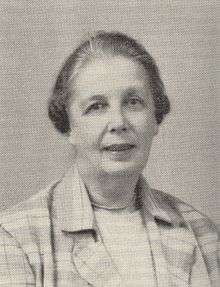Margaret Partridge
| Margaret Partridge | |
|---|---|
 Margaret Partridge, from The Woman Engineer | |
| Born |
Margaret Mary Partridge 1891 Nymet Rowland |
| Died | 27 October 1967 |
| Nationality | British |
| Education | Bedford College, London |
| Occupation | Electrical engineer, businesswoman |
| Known for | Rural electricity installations, engineering apprenticeships |
Margaret Mary Partridge (1891 – 27 October 1967) was an electrical engineer, contractor and founder member of the Women's Engineering Society (WES) and the Electrical Association for Women (EAW). Her business worked with WES to identify and employ female apprentices, including Beatrice Shilling. Partridge also helped campaign to change the International Labour Organisation convention on night work for women[1] in 1934, after Shilling was found working on her own in a power station at night, thus contravening the existing regulations.[2]
Early life and education
Margaret Partridge was born in Nymet Rowland, Devon on 8 April 1891.[3] She was educated at Bedford High School, Bedford, and obtained a scholarship to study mathematics at Bedford College, London, where she graduated with a bachelor's degree in 1914.[4] After graduating, Partridge initially tried teaching, before working for an engineering consultant in London[4] where she found here true interest, working in engineering.
Engineering career
'Today a man met me in the road and threatened to cut down some wires because he didn't like the look of them.'[5]
In 1917, Partridge moved to the engineering company Arthur Lyon & Wrench, which manufactured searchlights.[6] Taking advantage of the opportunities now available to women working in industry during the war, she trained as an engineering apprentice and ended up as the supervisor of the test department. At the end of the war, she decided to move back to the family home in Devon to set up her own electrical consulting business, M. Partridge & Co., Domestic Engineers, and advertised in the Women's Engineering Society's Journal The Woman Engineer under the slogan 'Women for Women's Work.'[7] Her company soon expanded to bid for the contracts to provide electricity supply for small towns and villages. She received a great deal of practical support and financial advice from Dr John Purves MIEE, an electrical engineer who would later advise on the electricity supply scheme for the whole of the west of England. Purves encouraged Partridge to set up electrical lighting companies for Thorverton and Bampton[5] where she brought electricity to the homes of the inhabitants for the first time. Although most residents were excited at the new developments, she also had to deal with complaints about rights of way and wires extending across properties and gardens.
Partridge decided to help young women who were interested in engineering as a career by offering apprenticeships specifically for young women leaving school. She wrote to Caroline Haslett asking for recommendations and was successful in appointing Beatrice Shilling who was an immediate success. Partridge and her partner, Margaret Rowbotham, encouraged Beatrice to go on to study at Manchester University and Beatrice would go on to be a pioneering aeronautical engineer. It was Beatrice who was discovered working on her own in a power station at night in contravention of the ILO convention on the working conditions of women and children, which stated that women were not permitted to work at night.[1] This case, with support from the Women's Engineering Society, led to a change in the convention, exempting women who were working in a supervisory role.[2]
During World War II, Partridge was appointed as the Ministry of Labour Women's Technical Officer for the South West, advising factories on the employment of women in munitions.
Retirement and later work
Following her retirement. Partridge continued to live in Devon and encouraged the members of her local Women's Institute to wire the village hall for electricity.[5]
Work for the Women's Engineering Society
Partridge joined the Women's Engineering Society in 1920. She became Vice-President in 1942, and President in 1943.[7]
References
- 1 2 "Conventions Concerning Employment of Women During the Night". Wikipedia. 2016-04-03.
- 1 2 "In honour of the I.L.O." The Woman Engineer. 4.
- ↑ Catharine M. C. Haines (2001). International Women in Science: A Biographical Dictionary to 1950. ABC-CLIO. pp. 238–. ISBN 978-1-57607-090-1.
- 1 2 "Royal Holloway Archives and Special Collections - Royal Holloway, University of London". www.royalholloway.ac.uk. Retrieved 2018-03-07.
- 1 2 3 Correspondence with Caroline Haslett, Institution of Engineering and Technology Archives, UK0108 NAEST 033.
- ↑ "British signal lamp 1918, military edition! - Catawiki". Catawiki. Retrieved 2018-03-07.
- 1 2 "Archives Woman Engineer journal online exhibition - The IET - The IET". www.theiet.org. Retrieved 2018-03-07.
Further reading
- Locker, Anne (12 July 2018). "Partridge, Margaret Mary". Oxford Dictionary of National Biography (online ed.). Oxford University Press. doi:10.1093/odnb/9780198614128.013.110230.